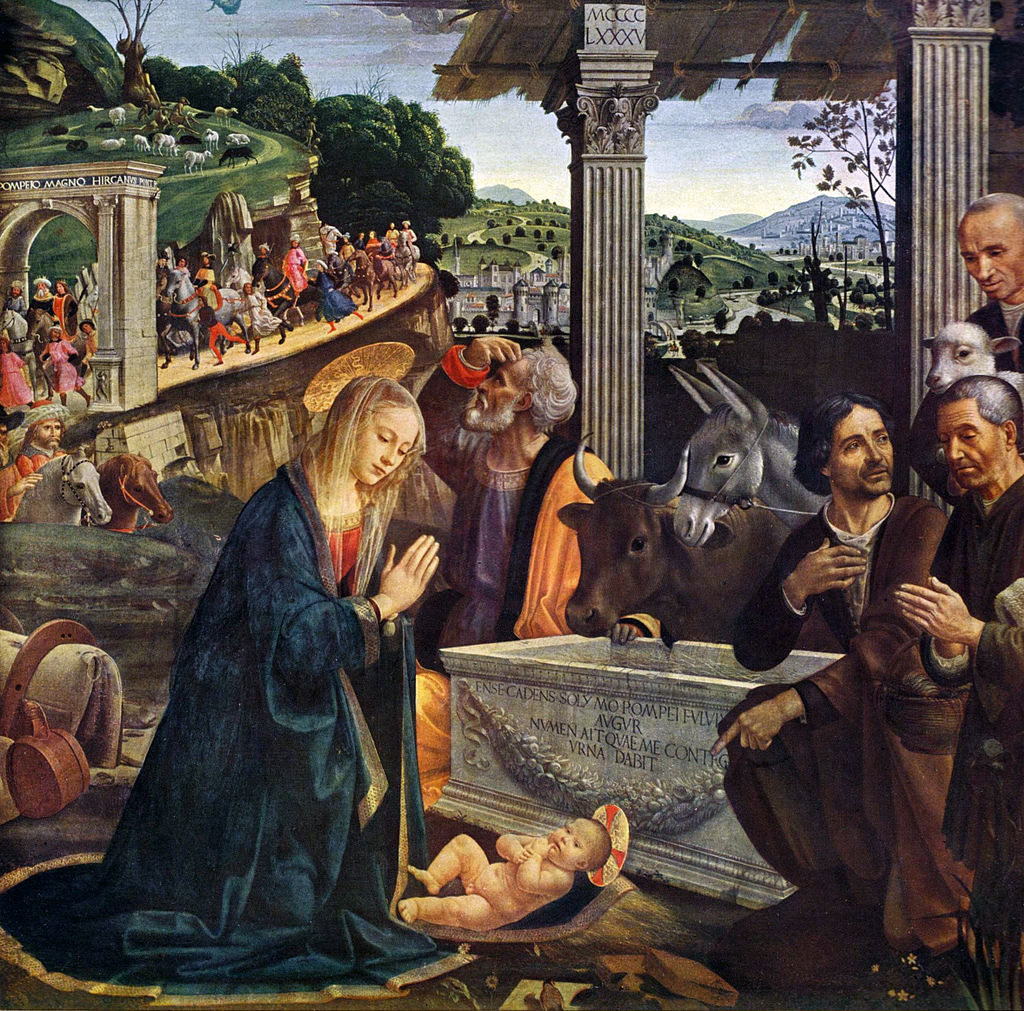This Week in Classical Music: December 21, 2020.Christmas is coming!We want to wish a very merry Christmas to all our listeners, and to celebrate the holiday, we decided to play several Christmas pieces from the Baroque period.In the past, we’ve done something similar with music from the Renaissance, so we’re moving forward on the classical music timeline.We start with a simple song, or rather a hymn, by the German composer Michael Praetorius called Uns ist ein Kindlein heut geborn (This day to us a Child is born).It was published in 1609.Here it is performed by the Gabrieli Consort under the direction of Paul McCreesh.
Eleven years later another German composer, Samuel Scheidt, who knew and worked with Praetorius, composed a hymn Puer natus in Bethlehem (A child is born in Bethlehem).This was a very popular text, and Praetorius also set it to music, not once but three time.Scheidt’s version is sung by the Sølvguttene ("The Silver Boys") choir from Norway under the direction of Fredrik Otterstad, here.
Heinrich Schütz was a more famous contemporary of Scheidt’s.One of his late works is The Christmas Story (Schütz was 75 when the Story was premiered in Dresden in 1660).The text was taken from Martin Luther’s version of the Gospels.You can listen to it here, in the performance by the Westfalishe Kantorei conducted by Wilhelm Ehmann.
Let’s move half a century forward.Georg Philipp Telemann, yet another German, was one of the most prolific composers in the history of music, and of course he had to write some music for Christmas.In fact, he wrote quite a bit of it:three Christmas Cantatas and one Oratorio.The cantatas were composed in1716-1717, while Telemann was serving as the municipal music director in Frankfurt; despite the designation of his position, Telemann continued to write church music as well.Here’s the first of the three Christmas cantatas, Uns ist ein Kind geboren (Unto us a child is born).Paul Dombrecht leads the ensemble Il Fondamento.It is interesting that the text, written by one Erdmann Neumeister, a writer and theologian, was picked up by another composer who also used it to write a cantata.It was most likely first performed in Leipzig in 1720.For a long time, it was assumed that the author is Johann Sebastian Bach, and the cantata even has a Bach catalog number, BWV 142.Based on tmusicological analysis, it has since been determined that it most likely wasn’t Bach; and the alternative authorship by Johann Kuhnau, who was then the Kantor at Thomaskirche, is now also disputed.Whoever the composer is, it’s a lovely piece of music; you can judge it for yourself (here); Jochen Grüner conducts the ensemble I Febiarmonici.
Christmas 2020
This Week in Classical Music: December 21, 2020. Christmas is coming! We want to wish a very merry Christmas to all our listeners, and to celebrate the holiday, we decided to play several Christmas pieces from the Baroque period. In the past, we’ve done something similar with music from the Renaissance, so we’re moving forward on the classical music timeline. We start with a simple song, or rather a hymn, by the German composer Michael Praetorius called Uns ist ein Kindlein heut geborn (This day to us a Child is born). It was published in 1609. Here it is performed by the Gabrieli Consort under the direction of Paul McCreesh.
Christmas pieces from the Baroque period. In the past, we’ve done something similar with music from the Renaissance, so we’re moving forward on the classical music timeline. We start with a simple song, or rather a hymn, by the German composer Michael Praetorius called Uns ist ein Kindlein heut geborn (This day to us a Child is born). It was published in 1609. Here it is performed by the Gabrieli Consort under the direction of Paul McCreesh.
Eleven years later another German composer, Samuel Scheidt, who knew and worked with Praetorius, composed a hymn Puer natus in Bethlehem (A child is born in Bethlehem). This was a very popular text, and Praetorius also set it to music, not once but three time. Scheidt’s version is sung by the Sølvguttene ("The Silver Boys") choir from Norway under the direction of Fredrik Otterstad, here.
Heinrich Schütz was a more famous contemporary of Scheidt’s. One of his late works is The Christmas Story (Schütz was 75 when the Story was premiered in Dresden in 1660). The text was taken from Martin Luther’s version of the Gospels. You can listen to it here, in the performance by the Westfalishe Kantorei conducted by Wilhelm Ehmann.
Let’s move half a century forward. Georg Philipp Telemann, yet another German, was one of the most prolific composers in the history of music, and of course he had to write some music for Christmas. In fact, he wrote quite a bit of it: three Christmas Cantatas and one Oratorio. The cantatas were composed in1716-1717, while Telemann was serving as the municipal music director in Frankfurt; despite the designation of his position, Telemann continued to write church music as well. Here’s the first of the three Christmas cantatas, Uns ist ein Kind geboren (Unto us a child is born). Paul Dombrecht leads the ensemble Il Fondamento. It is interesting that the text, written by one Erdmann Neumeister, a writer and theologian, was picked up by another composer who also used it to write a cantata. It was most likely first performed in Leipzig in 1720. For a long time, it was assumed that the author is Johann Sebastian Bach, and the cantata even has a Bach catalog number, BWV 142. Based on tmusicological analysis, it has since been determined that it most likely wasn’t Bach; and the alternative authorship by Johann Kuhnau, who was then the Kantor at Thomaskirche, is now also disputed. Whoever the composer is, it’s a lovely piece of music; you can judge it for yourself (here); Jochen Grüner conducts the ensemble I Febiarmonici.